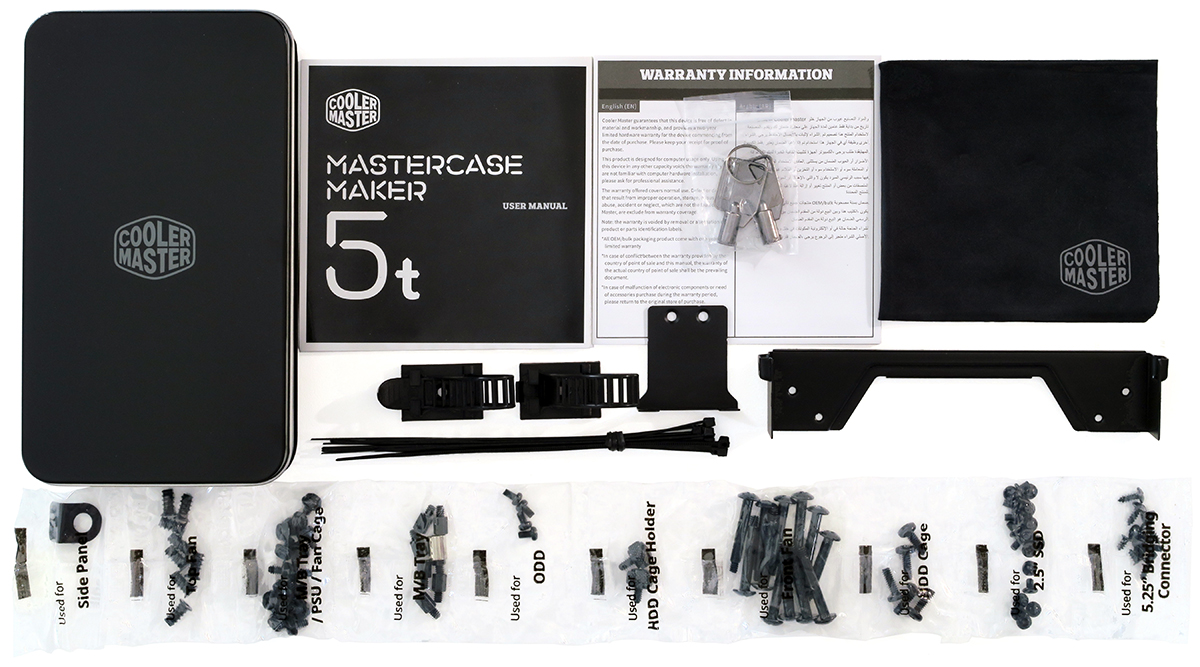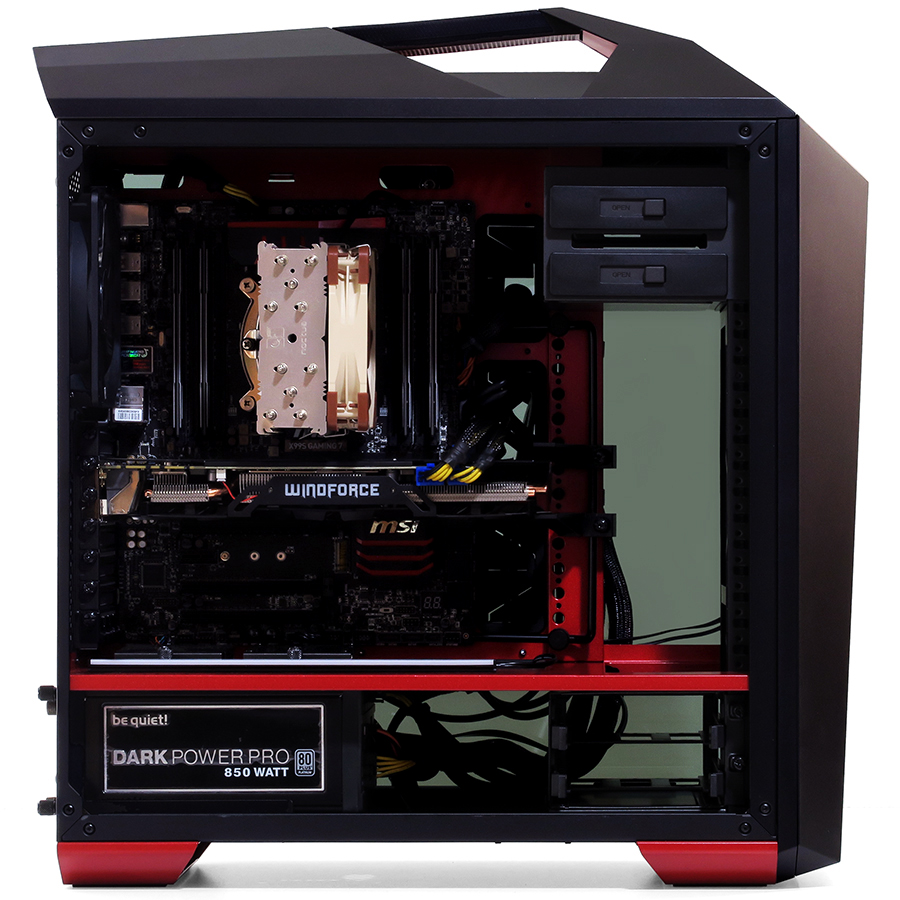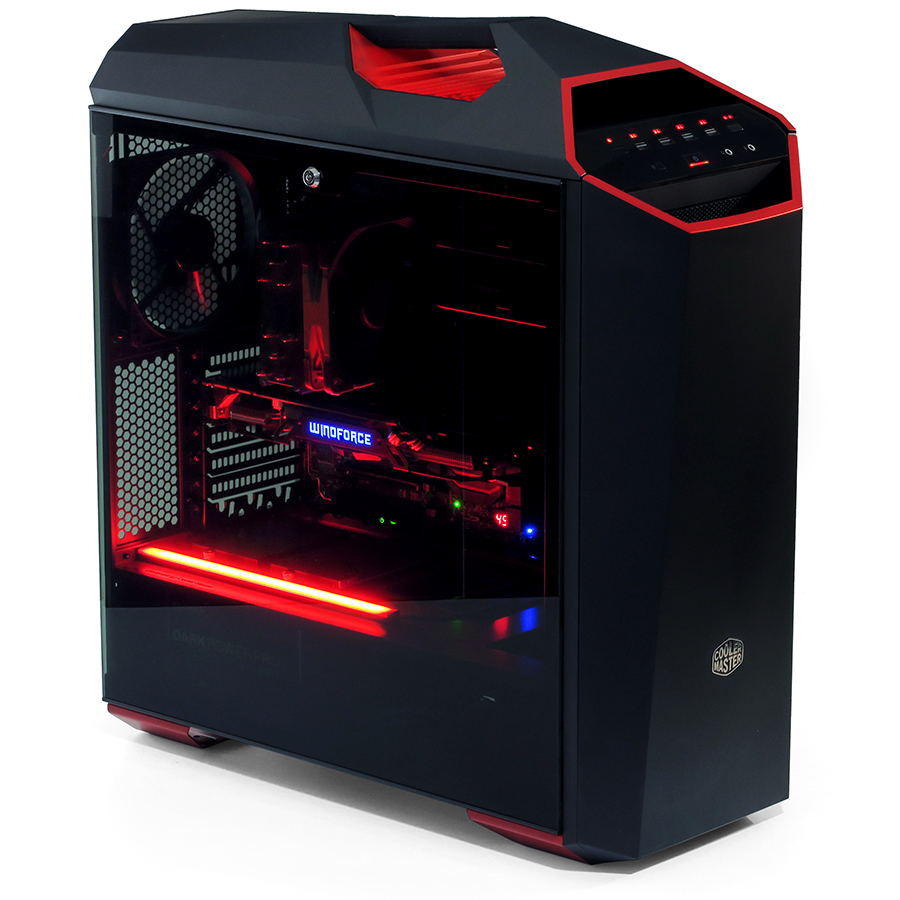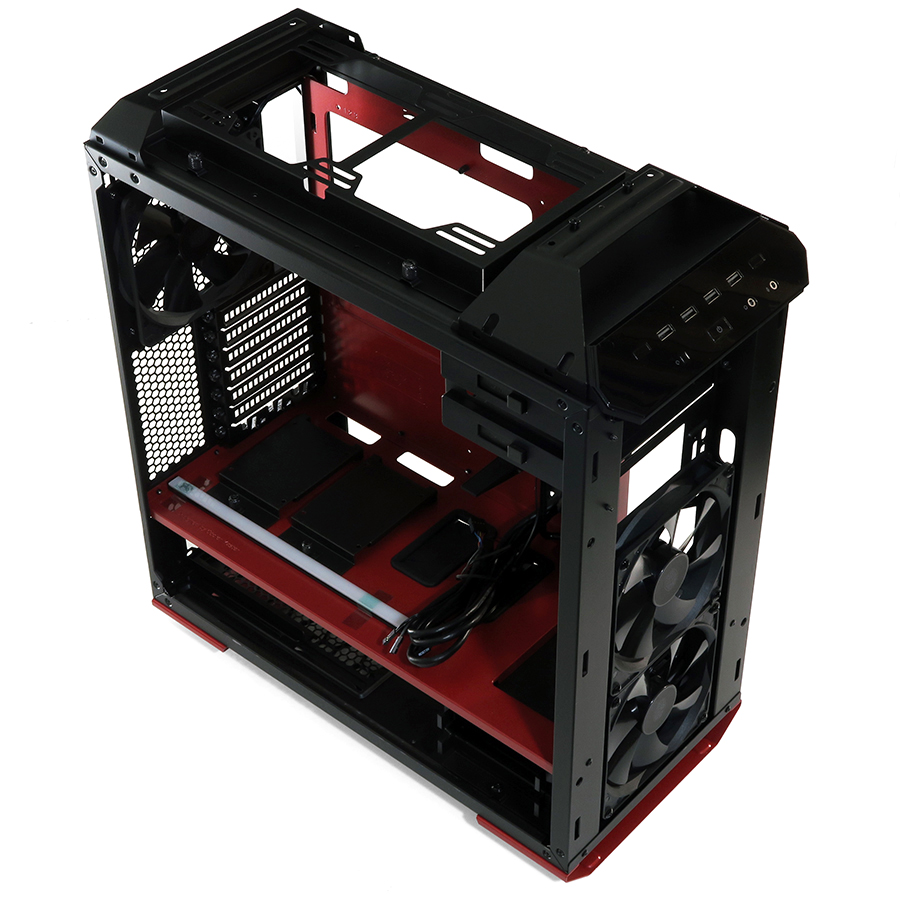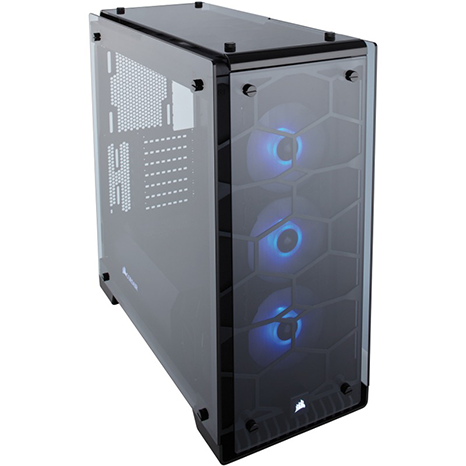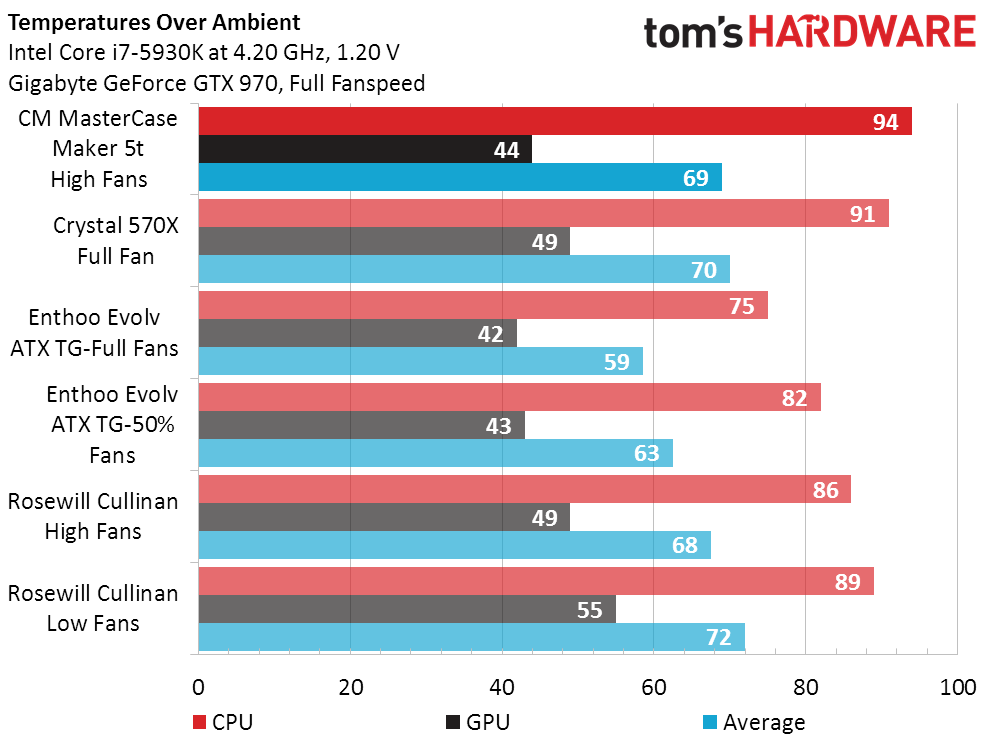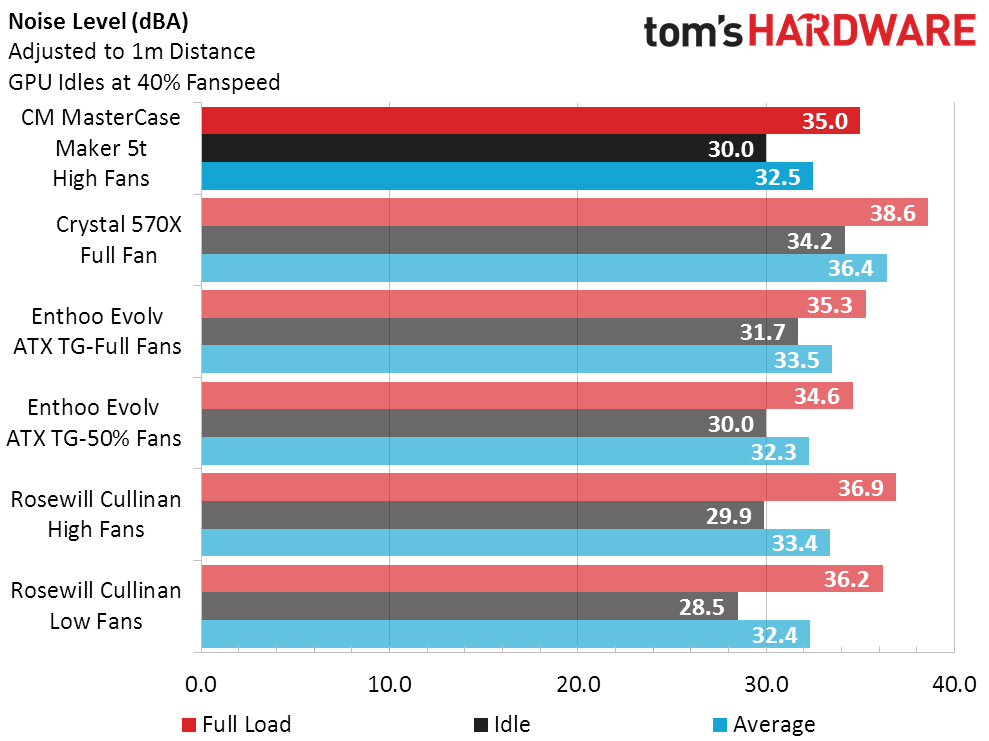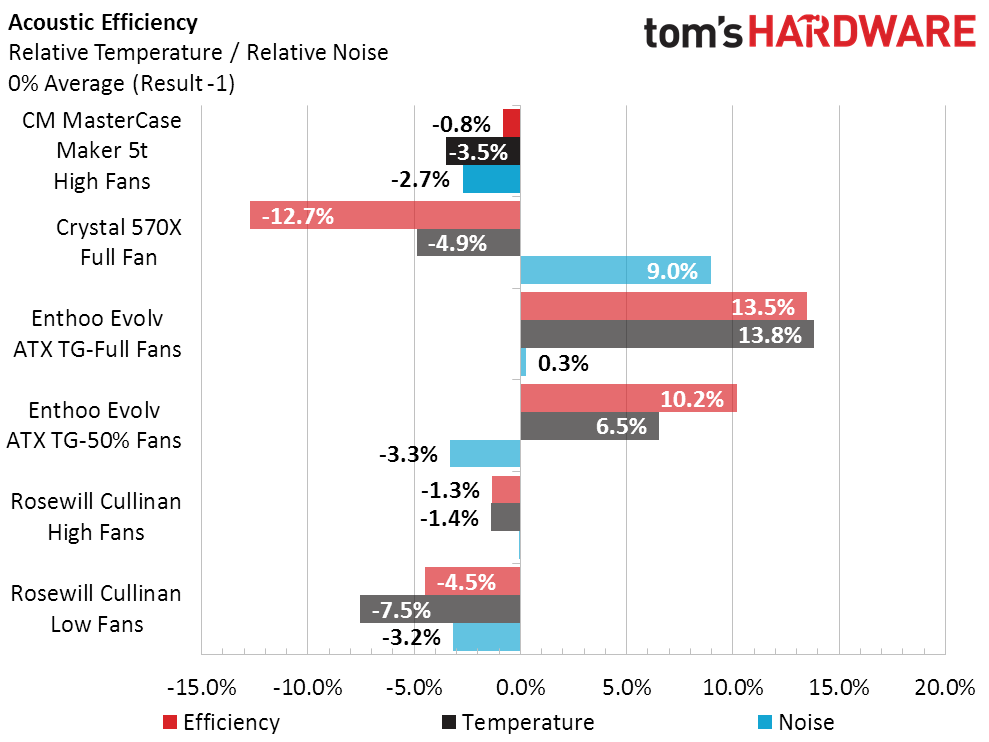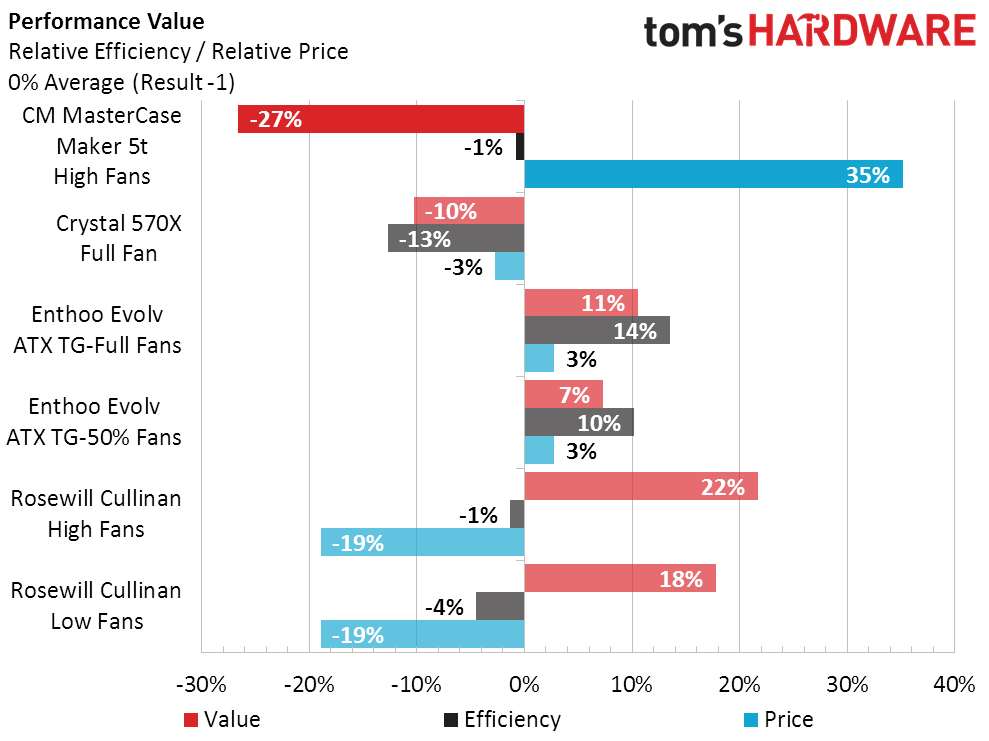Cooler Master MasterCase Maker 5t ATX Case Review
The final t in the Maker 5t case means Tempered Glass. It looks good, but how does the new material affect performance?
Why you can trust Tom's Hardware
Hardware Installation, Evaluation & Conclusion
The MasterCase Maker 5t includes mounting brackets, cable ties, and a rolled-up pack of various screws in a decorative metal tin. Cooler Master adds a cleaning cloth to a separate bag that contains assembly and warranty instructions.
Motherboard leads include a split PWR_LED connector, an HD Audio cable without any legacy AC 97 dongle, and two USB 3.0 cables.
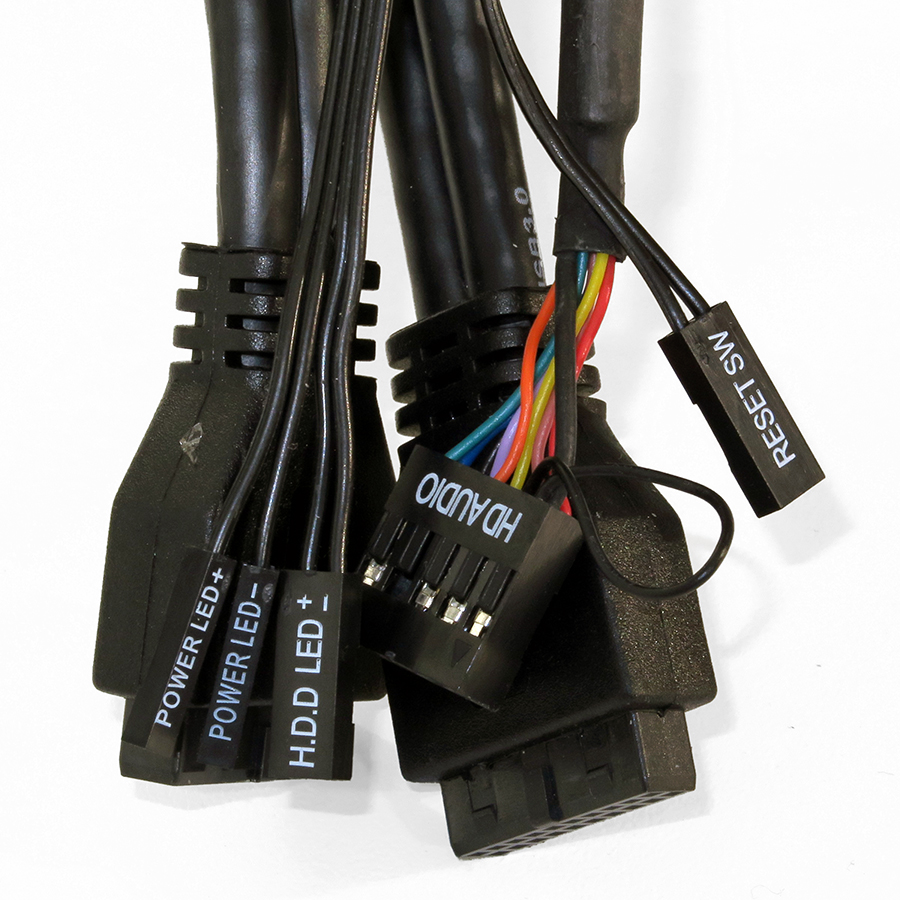
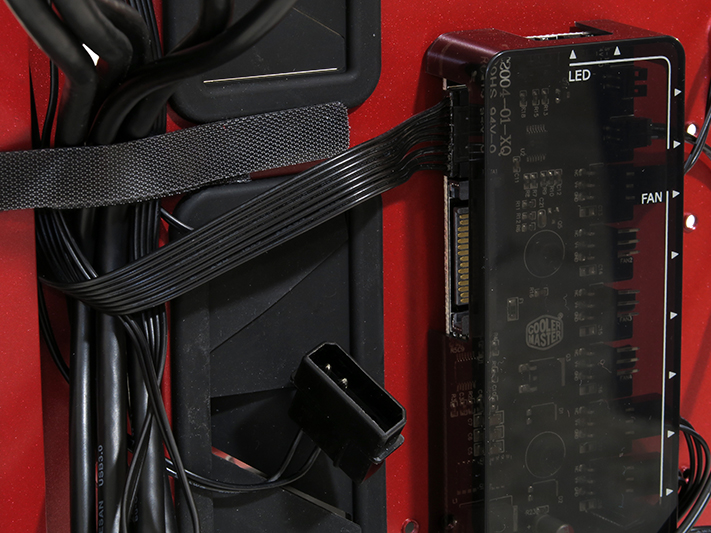
The MasterCase Maker 5t infuriatingly uses both SATA and legacy ATA power connectors for the fan/LED control module and front panel accessory lights. This required me to fish through my modular cable kits to find an appropriate combination cable, as the alternatives were to run two cables, or to use only legacy ATA power with SATA adapters.
The MasterCase Maker 5t’s card support bracket doesn’t actually fit under a card, and its individual support dividers must be angled in from the sides. Long cards require it to be rotated 180°, but doing that in turn requires the individual dividers to also be flipped back to the correct orientation. Other than those minor inconveniences, hardware installation follows the steps outlined in our How To Build A PC.
Here’s how the MasterCase Maker 5t compares to other glass-paneled cases in today’s performance charts:
*Shared on 3.5" tray **w/o Center Cage ***By 5.25" Adapter Tray ^Slot 1-4
With a total height exceeding 21” by a fairly large margin, I’m sure Cooler Master would love me to label the MasterCase Maker 5t a full-tower. But it doesn’t have full-tower features, and the height under the handle is only 20.5”. Thus, it’s a mid-tower with external fluff.
Get Tom's Hardware's best news and in-depth reviews, straight to your inbox.
Test Results
Glass-paneled cases take a long time to warm up, but although the Crystal 570X has more glass, the MasterCase Maker 5t has slower fans. All of the cases in today’s comparison would function better with a larger cooler, and all are designed for liquid cooling. Still, our original configuration was designed to weed out poorly-ventilated cases, so to increase cooler size would be to lower our minimum cooling standard.
The MasterCase Maker 5t makes scant noise on its own, and also does a fairly good job of containing the noise of internal components.
The MasterCase 5t’s two intake and one exhaust fan are so much quieter than the three intakes of the Crystal 570X that it scores nearly 12% higher in overall performance, which is a comparison of cooling to noise.
Every glass-paneled case produces poor value, and the general direction has been that more glass panels bring even less value. That’s at least partly (and probably mostly) due to the cost of shipping glass and replacing panels that get broken before the buyer actually receives the package. Yet the MasterCase 5t bucks this trend by being priced higher than the Crystal 570X while having fewer glass panels. Cooler Master would likely credit the ultra-smooth metallic red paint of its interior panels for the bulk of its excess price, however, and there’s no denying that its extra weight means extra material went into its production.
The MasterCase Maker 5t has the best fit and finish of any case I’ve tested in a while, and it’s also a little sturdier than most premium cases. The convenience of tilt-down side panels is also far more important to me than the style of screw-on floating glass. Yet fan speeds that are a little low for our test leave me with an evaluation conundrum: How can I award a case that barely squeaked through our cooling evaluation? How can I not award the ATX Mid-Tower that I’d personally like most to own?
Fairness dictates that I put those thoughts in my verdict.
MORE: Best Cases
MORE: All Case Content
MORE: In Pictures: 40 Unusual Computer Case Mods
Follow us on Facebook, Google+, RSS, Twitter and YouTube.
-
JackNaylorPE I don't see it being worth the price ...Reply
The front design limits water cooling options on top and if you gonna do something funky with the top-front, throw a hot-swap drive bay in there eliminating any user need for off-site backups or large file swaps w/i the need for USB cables and desktop clutter.
The filters look like those on Phanteks cases, and it emulates the Phanteks drive mount, fan and LED control systems also.
Don't get the whole "front cover" thing and the top cover design would appear to significantly reduce air flow.
As for cooling, 1st ... I'm used to seeing temps displayed in C so if it was 94C over ambient (say 23C), 117C seems crazy. If not, please put an F on that graphic like the dbA appears on the sound graphic. And 2nd, the $190 MSRP Enthoo Evolv is 20 C/ F) cooler and the $170 Luxe TG is $170 and its more fans / radiators.
The aesthetics of the floating panel versus flush will I expect vary by individual. It reminds me of the flared rear wheel wells on the Porshe 930. They kind of take away from symmetry but they kinda add a little touch of badass. I'd would have liked a necked screw w/ a bigger knurled know that was a "push turn-and-lock" style. -
turkey3_scratch What a bizarre name. Has "Master" twice in a row, and you're not making the case...Reply -
Windfeuer i'm really confused.Reply
IMHO the right panel is totaly useless, and support only 2 drives 3.5"(only me find absurd to PAY for accessories after 267 euros? really?)
with only the left glass panel and 3 or 2+3 3.5 drive slots I think would be more equilibrated
I hope they will sell the handle with other spare parts.
(sorry for any mistake i'm not english) -
Crashman Reply
The pivot-down side panels are the entire reason I'd pick this over any other glass case I've tested. I hate messing with those side panel screws of other cases while NOT crossing my fingers that I won't drop the things because...if I crossed my fingers I'd drop the things :)18968317 said:I don't see it being worth the price ...
The front design limits water cooling options on top and if you gonna do something funky with the top-front, throw a hot-swap drive bay in there eliminating any user need for off-site backups or large file swaps w/i the need for USB cables and desktop clutter.
The filters look like those on Phanteks cases, and it emulates the Phanteks drive mount, fan and LED control systems also.
Don't get the whole "front cover" thing and the top cover design would appear to significantly reduce air flow.
As for cooling, 1st ... I'm used to seeing temps displayed in C so if it was 94C over ambient (say 23C), 117C seems crazy. If not, please put an F on that graphic like the dbA appears on the sound graphic. And 2nd, the $190 MSRP Enthoo Evolv is 20 C/ F) cooler and the $170 Luxe TG is $170 and its more fans / radiators.
The aesthetics of the floating panel versus flush will I expect vary by individual. It reminds me of the flared rear wheel wells on the Porshe 930. They kind of take away from symmetry but they kinda add a little touch of badass. I'd would have liked a necked screw w/ a bigger knurled know that was a "push turn-and-lock" style.
I need not worry that it's overly expensive, since I didn't pay for mine. But I can't give it any kind of award, mostly for all of the reasons you just pointed out. It's a good case for someone who doesn't really care about money, and I'm sure there are people who didn't actually earn their money who will like it.
-
gwolfman @CrashmanReply
Can you please measure the case to see if it'll fit my motherboard (Gigabyte GA-Z170X-Gaming G1)? It's labeled as an E-ATX mobo, but it's only 2cm longer/wider than standard ATX (30.5cm x 26.4cm vs ATX 30.5 \00d7 24.4 cm). It looks like it'll only cover the cable cutouts a bit, but can you please check to see if anything else will get in the way?
Thanks!
-GWolfman -
VinceN83 It's pretty much the same as the other Master Master Maker Maker something. Same shit with different colors and tempered glass. Overpriced POS. And seriously, can they do something about the product names? Whoever comes up with these has ZERO creativity.Reply -
Nuckles_56 The red on the case really looks tacky and I feel that it is way overpriced for what it isReply
